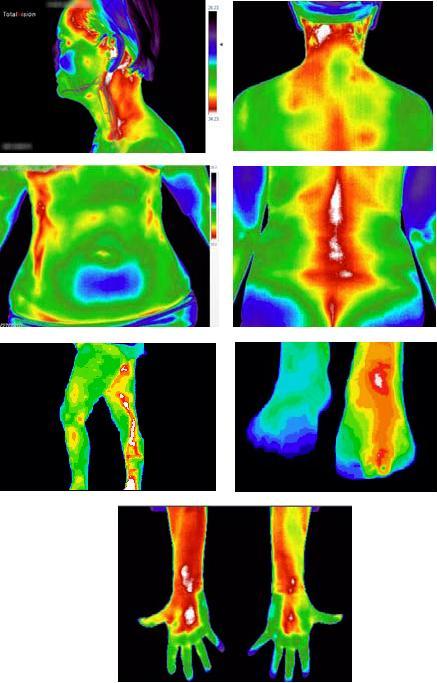Thermography and Angiogenesis Understanding the Connection
Carol Chandler, D.O.M. 9/25/2010
©2010 MyLife Global, Inc. www.mylifeimaging.com
Humans are born with all their blood vessels; 60,000 miles worth in a typical adult. New, temporary blood vessels only grow normally to build the lining of the uterus for the menstrual cycle each month, to nourish an embryo or to heal a wound. These blood vessels are kept under control with naturally occurring angiogenic inhibitors. In certain situations angiogenesis can go out of balance, resulting in a myriad of diseases.
Angiogenesis is good and it is also bad. It is a naturally occurring blood supply that we sometimes recognize as inflammation. Muscles need it for healing and cancer needs it to grow. For healing, angiogenesis is constantly developing and receding in our bodies, every minute of every day. Cancer does not start out with angiogenesis but if something goes wrong, it becomes the tipping point between a harmless growth and a potentially harmful one. Angiogenesis can be completely invisible to the human eye and x‐rays. But it can be seen… with infrared eyes.
Angiogenesis is also known as neo‐vascularity. It is not a part of our normal blood vessel network which is formed before we are born. It is “new” and it is also different.
This is how normal
blood vessels look
each is an individual
tube‐like formation.
Angiogenesis looks more
like a sponge. It has no
form and does not
resemble or function like
a normal vessel.
Angiogenesis is very metabolically active and consequently creates a minute amount heat in the process. Thermography or infrared imaging can detect very small increments of temperature differences. Thermography “sees” or detects angiogenesis
Breast cancer typically takes 8‐10 years to grow large enough to be detected by today’s accepted standards. By this time the tumor has spent 75% of its life undetected. The angiogenesis begins early in that process. Without the blood supply, the tiny tumor would remain dormant, stop progressing or would die.
diagnosed breast cancer in the left breast, with the
accompanying network of angiogenesis, which can
only be detected with an infrared device
This infrared image was taken three months after
the tumor was removed. With the tumor absent, the
infrared exam confirmed that the angiogenesis has
receded.
Angiogenesis activity related to cancer development is easier to detect in the breast than in some other areas of the body, which is why it is so well known for breast screening.
The most promising cancer research is in the targeted control at the “root” of the problem, which is the blood supply that supports and feeds the tumor. There is still a problem. By the time the tumor is discovered by traditional methods the angiogenesis has been present for many years. The best opportunity to intervene is in the beginning of the process, not later. Just as it can occur naturally, it can also be inhibited naturally as there are foods known to be angiogenesis inhibitors.
The answer to the problem of detecting angiogenesis in the earliest stage is thermography; which offers a harmless and painless opportunity to recognize angiogenesis as a warning sign. The current strategy of Detection and treatment has not proven to date to be successful enough to reduce the incidence of breast cancer or the associated mortality rates. It is time to turn our attention to reducing the risk. Medical knowledge is believed to double every 18 months, but it takes much longer to put new ideas into practice. The new knowledge of how cancer develops and grows is a major step toward making harmless changes that can make a difference Thermography and ongoing angiogenesis research is currently our best hope for the future, but you don’t have to wait. Today we have special infrared thermography devices registered with the FDA and it is available now. Thermography is not just for detecting cancer, it is a true opportunity for prevention. Visit www.iamtonline.org for a list of locations.
More Examples of Angiogenesis and Inflammation





